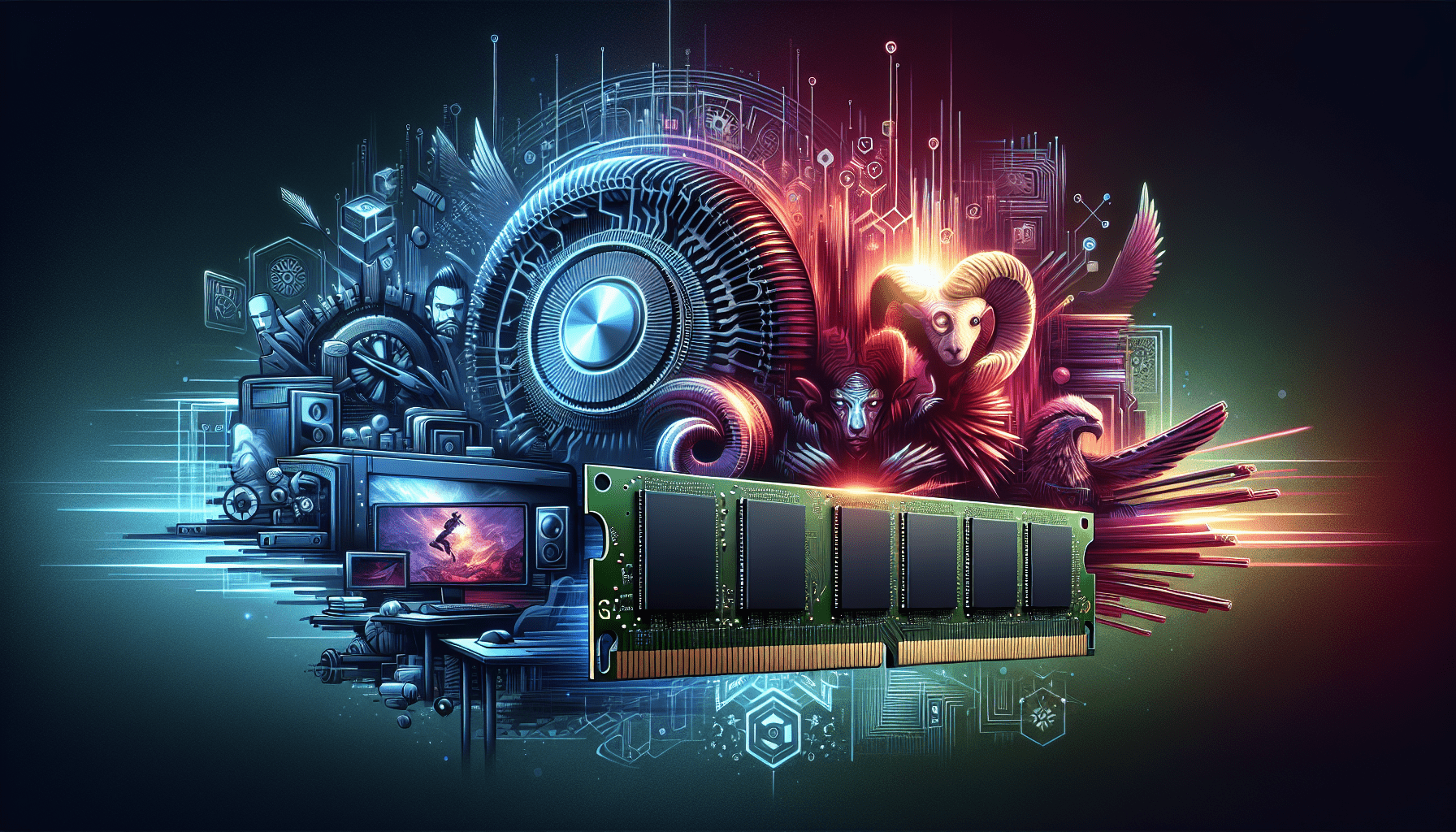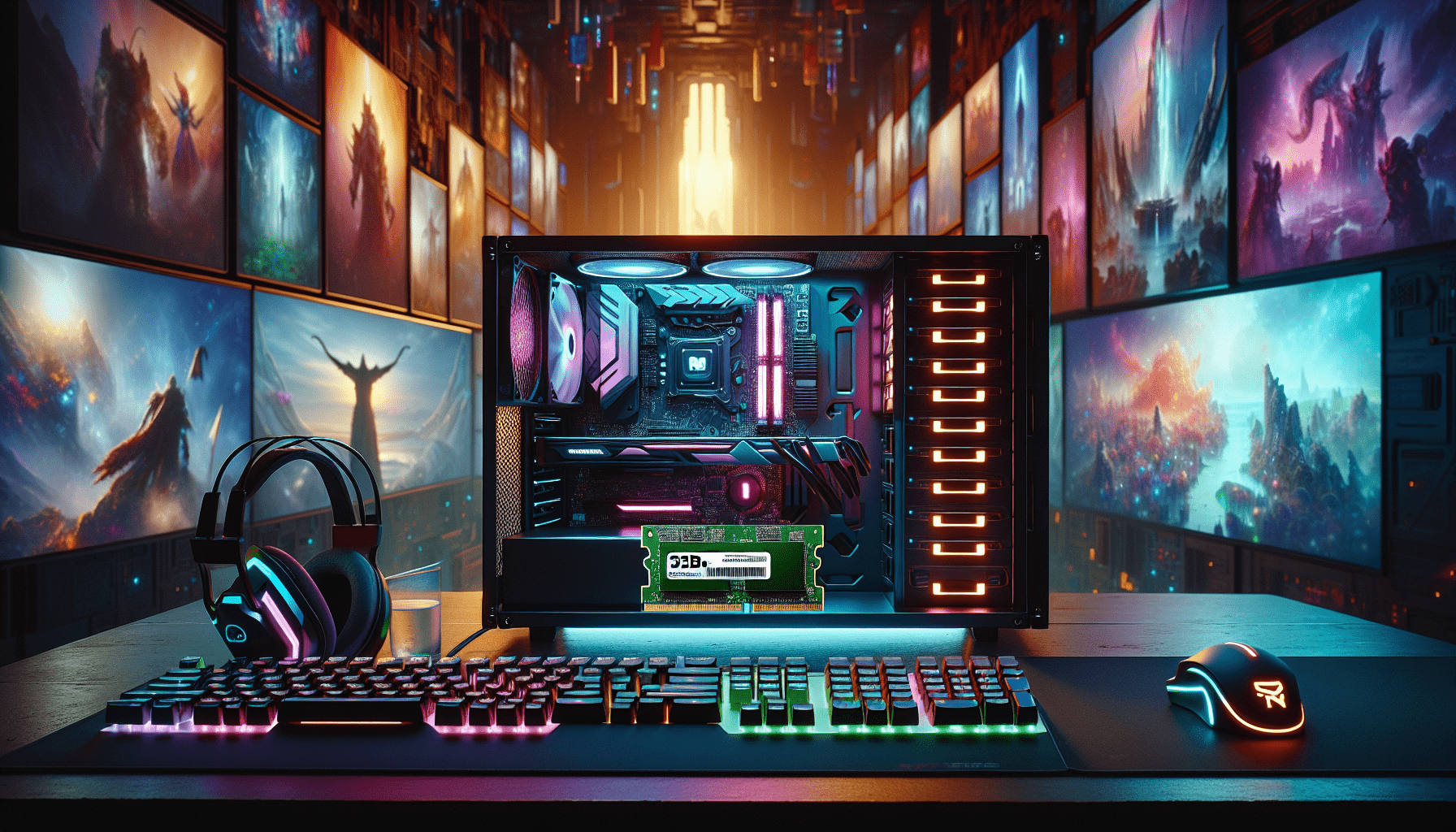



Imagine a gaming world where you can explore vast open worlds, engage in epic battles, and embark on thrilling adventures, all without any worries of lag or performance issues. That’s the dream, right? Well, as technology continues to advance at an astonishing pace, the question on everyone’s mind is, “Will games require 32GB RAM?” With game developers pushing the boundaries and creating more immersive and visually stunning experiences, it’s natural to wonder if our trusty gaming rigs will soon be rendered inadequate. So, let’s dive into this intriguing topic and find out if upgrading to 32GB RAM will be a necessity for gamers in the near future.

Current RAM Requirements
Minimum and recommended RAM for games today
When it comes to playing games on your computer, having enough RAM is essential for a smooth gaming experience. Currently, the minimum RAM requirements for most games range from 8GB to 16GB. However, it is recommended to have at least 16GB of RAM to ensure optimal performance and avoid any potential slowdowns or lag. Some newer games, especially those with more advanced graphics and larger game worlds, may even require 32GB of RAM for the best experience.
Impact of RAM on game performance
RAM plays a crucial role in determining the performance of games. It affects how smoothly the game runs, how quickly assets and textures are loaded, and how responsive your computer is while gaming. Insufficient RAM can lead to choppy frame rates, longer load times, and even crashes or freezing during gameplay. With more RAM, games can be better optimized to store and access the necessary data, resulting in smoother gameplay and a more immersive experience.
Advancements in Game Graphics
Introduction of ray tracing technology
In recent years, there have been significant advancements in game graphics, with the introduction of technologies like ray tracing. Ray tracing allows for more realistic lighting and reflections in games, resulting in stunning visuals and enhanced immersion. However, these advanced graphics also require more computational power and, in turn, more RAM. As game developers continue to incorporate ray tracing into their games, the demand for higher RAM capacity will likely increase.
Increasing demand for higher resolution and frame rates
Alongside the advancements in graphics technology, there is a growing demand among gamers for higher resolution and frame rates. Many players now aspire to play games in 4K resolution or at least in high definition (HD) with a smooth frame rate of 60 frames per second (FPS) or higher. Achieving these visuals and frame rates necessitates not only powerful hardware components but also ample RAM capacity to handle the increased data processing requirements.
RAM Usage in Modern Games
Allocation of RAM for game assets and textures
Modern games are becoming increasingly complex and detailed, with high-resolution textures, intricate 3D models, and expansive game worlds. To accommodate these elements, developers need to allocate a significant amount of RAM for storing and accessing these game assets. The larger the game world and the higher the texture quality, the more RAM is required to ensure smooth gameplay and seamless transitions between different areas.
Importance of fast and efficient RAM access
Aside from the overall capacity of RAM, the speed and efficiency of accessing the stored data also have a significant impact on game performance. Faster RAM modules, such as those with higher clock speeds or lower latency, can provide quicker access to game assets and reduce the loading times. This allows for smoother gameplay and faster transitions between different areas of the game, enhancing the overall gaming experience.
Increasing RAM Requirements
Developers pushing the limits of game design
Game developers are continually pushing the limits of game design, aiming to create more immersive and visually stunning experiences for players. As a result, newer games often have higher system requirements, including increased RAM capacity. These requirements are driven by the need for more detailed textures, larger game worlds, and more advanced physics simulations. To fully enjoy these games and experience them as intended, having a higher amount of RAM has become increasingly important.
Examples of recent games with high RAM requirements
Several recent games have showcased the increasing RAM requirements in the gaming industry. Games like “Cyberpunk 2077” and “Assassin’s Creed Valhalla” are known for their expansive open worlds, detailed graphics, and immersive storytelling. These demanding games often recommend having 16GB or more of RAM to ensure a smooth and enjoyable gaming experience. Looking ahead, it is likely that upcoming game releases will continue to raise the bar in terms of RAM requirements.

Benefits of Higher RAM Capacity
Improved multitasking while gaming
One of the main advantages of having higher RAM capacity, such as 32GB, is the ability to multitask efficiently while gaming. With more RAM available, you can have other applications running in the background without impacting game performance. For example, you can stream your gameplay, chat with friends on voice chat platforms, or have web browsers open for quick reference during gaming sessions. This improved multitasking capability enhances the overall gaming experience and convenience.
Reduced loading times and smoother gameplay
Another benefit of having higher RAM capacity is noticeably reduced loading times in games. When a game needs to load assets or transition between different areas, having more RAM allows for faster access to the necessary data, resulting in shorter loading screens. Additionally, games that dynamically load assets as you move through the game world can benefit from higher RAM capacity, ensuring smooth gameplay without sudden pauses or stutters when new assets need to be loaded.
Requirements for Gaming in the Future
Predictions on RAM requirements for upcoming games
As we look towards the future of gaming, it is expected that RAM requirements will continue to increase. With advancements in game graphics, such as real-time ray tracing becoming more prevalent, the demand for higher RAM capacity will likely rise. It is not unreasonable to anticipate that upcoming games may require 32GB of RAM or even more to ensure optimal performance and to capitalize on the latest graphical enhancements and features.
Effect of emerging technologies on RAM needs
Emerging technologies, such as virtual reality (VR) and augmented reality (AR), will likely have a significant impact on RAM requirements in the future. Both VR and AR experiences demand high-resolution displays, accurate tracking, and real-time rendering, all of which rely heavily on computational power and RAM capacity. As these technologies become more mainstream and developers create more immersive experiences, the need for higher RAM capacity will be crucial to handle the increased data processing demands.
Hardware Limitations
Compatibility with current and future hardware
While it is important to consider the RAM requirements of games, it is equally important to ensure compatibility with both current and future hardware. Different generations of processors and motherboards may have limitations on the maximum RAM capacity they support. Therefore, it is crucial to check the specifications of your hardware before investing in higher RAM capacity. Additionally, considering the potential for future hardware upgrades can help ensure that your gaming system is ready to handle the requirements of upcoming games.
Impact of other hardware components on game performance
RAM alone cannot guarantee optimal game performance. Other hardware components, such as the CPU and graphics card, also play a vital role in determining how well a game runs on your system. A well-balanced system, with a powerful CPU and GPU combination, can maximize the benefits of higher RAM capacity. Likewise, an outdated or underpowered CPU or GPU may bottleneck the performance, regardless of the amount of RAM installed.
Alternative Solutions to Increased RAM
Optimization techniques by game developers
While increasing RAM capacity is one solution to meet the growing requirements of modern games, game developers also employ optimization techniques to ensure a smooth gaming experience on systems with lower RAM capacity. These techniques include efficient asset streaming, smart memory management, and dynamic asset loading. By utilizing these optimization techniques, developers can reduce the strain on RAM and still provide an enjoyable gaming experience for players who may not have the latest hardware.
Cloud gaming and offloading resource-intensive tasks
Another alternative solution to cope with increased RAM requirements is the emergence of cloud gaming services. Cloud gaming allows players to offload the resource-intensive tasks, including RAM-intensive processes, to remote servers, reducing the burden on the user’s local hardware. By utilizing the high-performance cloud servers, players can enjoy games with demanding RAM requirements without the need for extensive upgrades on their own systems. This technology presents an exciting opportunity for gamers to access the latest games without breaking the bank on hardware upgrades.
Considerations for PC Builders
Choosing the right amount of RAM for gaming
When building a gaming PC, finding the sweet spot for RAM capacity is essential. While current games may still be playable with 16GB of RAM, investing in higher capacity, such as 32GB, can provide better future-proofing and handle the requirements of upcoming games. It is important to consider your budget, the demands of the games you wish to play, and the compatibility with your chosen hardware components. Researching the system requirements of your favorite games and considering potential upgrades in the near future can help make an informed decision on the right amount of RAM for gaming.
Factors to consider when upgrading RAM for gaming
If you already have a gaming PC and are considering upgrading your RAM, there are several factors to take into account. Firstly, make sure your motherboard supports the desired RAM capacity and speed. Additionally, consider the impact on other hardware components, such as the CPU and GPU. Upgrading the RAM alone may not result in significant performance improvements if these other components are outdated or underpowered. Lastly, consider your budget and prioritize your upgrades based on the overall system balance and requirements of the games you play.
Adapting to Future RAM Requirements
Evaluating upgrade options for existing systems
For gamers with existing systems, evaluating upgrade options for RAM can extend the lifespan of your gaming PC and allow you to meet the requirements of upcoming games. If your motherboard supports higher RAM capacities, consider adding additional RAM modules to increase the overall capacity. Alternatively, if your motherboard does not support higher RAM capacities, upgrading to a newer motherboard that supports higher RAM capacity may be necessary. By carefully assessing the compatibility of your current system and the potential for future upgrades, you can adapt your gaming PC to meet future RAM requirements.
Future-proofing your gaming PC
To future-proof your gaming PC, it is important to consider not only RAM but also other hardware components. As game requirements continue to rise, having a well-balanced system with powerful components will provide the best gaming experience. When building or upgrading your gaming PC, opt for components that offer headroom for future upgrades, such as CPUs and motherboards that support higher RAM capacity. By planning ahead and investing in capable hardware, you can ensure that your gaming PC remains capable of handling the demands of future games, even as RAM requirements increase.
In conclusion, RAM requirements for games are currently increasing due to advancements in graphics technology, larger game worlds, and more detailed game assets. Higher RAM capacity, such as 32GB, offers benefits such as improved multitasking, reduced loading times, and smoother gameplay. As game developers continue to push the limits of game design and new technologies emerge, the requirements for RAM will likely continue to rise. Gamers and PC builders should carefully consider the right amount of RAM for gaming, compatibility with hardware, and alternative solutions such as optimization techniques and cloud gaming. With the proper considerations and planning, it is possible to adapt to future RAM requirements and future-proof your gaming PC for an optimal gaming experience.
Disclosure: As an Amazon Associate, I earn from qualifying purchases.






